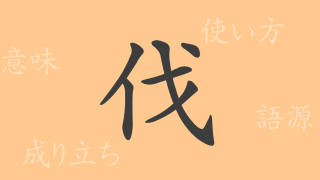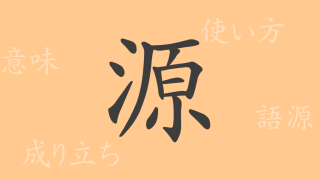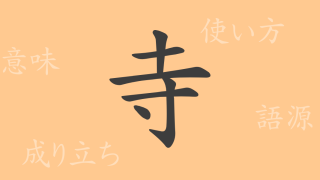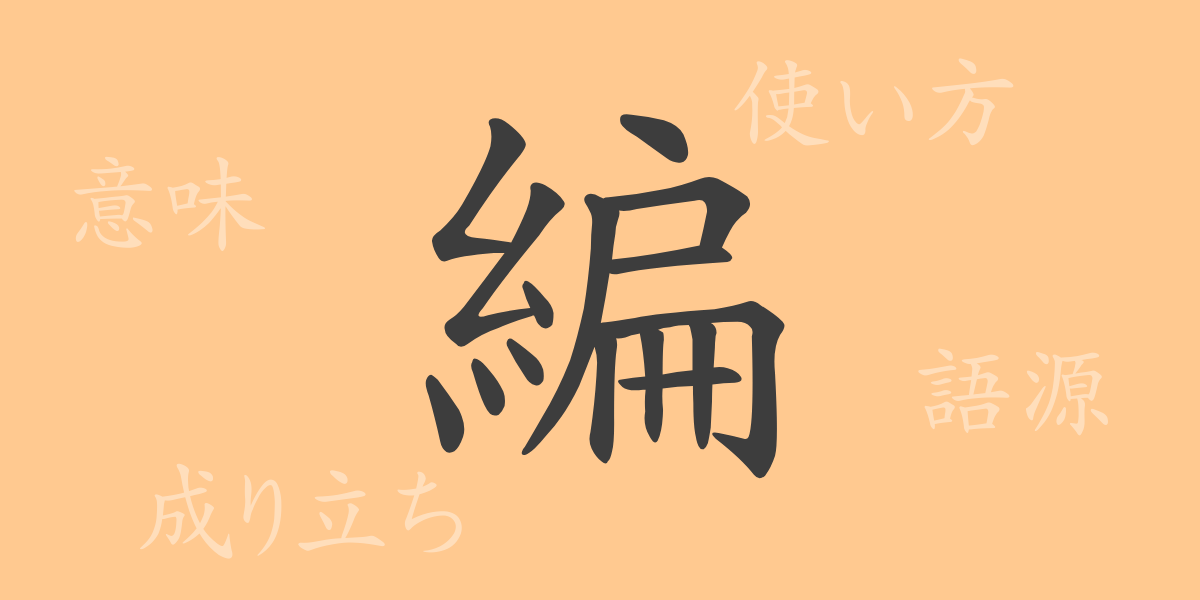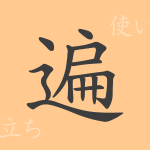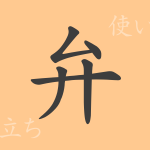The beauty of the Japanese language lies in its complexity, with each kanji character carrying deep meanings and historical significance. Today, we focus on the common kanji character “編” (hen), exploring its origins, meanings, usage, as well as idioms and proverbs that feature this character. Join us as we delve into the world of “編” (hen), a character that is deeply rooted in Japanese culture and daily life, not just as a letter but as a significant cultural element.
Origins of 編 (hen)
Tracing the origins of the kanji “編” (hen), we find its history is ancient, with its prototype appearing in old Chinese texts. This kanji is composed of the “糸” (ito) radical, meaning “thread,” and “扁” (hen), which implies changing something. Originally derived from the act of weaving threads, it came to signify the act of bringing things together. Consequently, “編” (hen) started to denote the act of creating something using threads, and later, it also came to be used for editing and compiling various elements.
Meanings and Usage of 編 (hen)
The kanji “編” (hen) primarily means “to weave,” “to edit,” and “to compile.” From the act of weaving, it broadly refers to any action of bringing together, organizing, and structuring elements. For instance, “編集” (henshū) means to compile and shape text or video into a single work, “編成” (hensei) refers to organizing personnel or resources into a system, and “編入” (hennyū) denotes incorporating new elements into an existing group or organization.
Reading, Stroke Count, and Radical of 編 (hen)
How is the kanji “編” (hen) read and what are its components in the Japanese language?
- Reading: The on’yomi (音読み) is “ヘン” (hen), and the kun’yomi (訓読み) is “あむ” (amu).
- Stroke Count: “編” (hen) is composed of 15 strokes in total.
- Radical: The radical is “糸” (ito), which itself has 9 strokes and significantly influences the overall shape of the kanji.
Idioms, Proverbs, and Phrases Using 編 (hen)
The Japanese language is rich with idioms, proverbs, and phrases that include “編” (hen). Here are some examples along with their meanings:
- 編集 (henshū): The process of compiling and shaping text or video into a finished work.
- 編成 (hensei): The act of organizing personnel or resources into a system or structure.
- 編入 (hennyū): The incorporation of new elements into an existing group or organization.
- 編み出す (amidasu): To come up with new methods or ideas.
- 編み物 (amimono): The craft of making fabric or garments using threads.
Summary of 編 (hen)
The kanji “編” (hen), stemming from the concrete act of weaving threads, has evolved to represent abstract concepts such as compiling, organizing, and structuring. Its usage in Japanese is extensive, with terms like “編集” (henshū) and “編成” (hensei) being part of everyday language. Through idioms and proverbs, it is clear that “編” (hen) is firmly embedded in our language. This kanji is not just a character but plays a crucial role in our culture and daily life.








